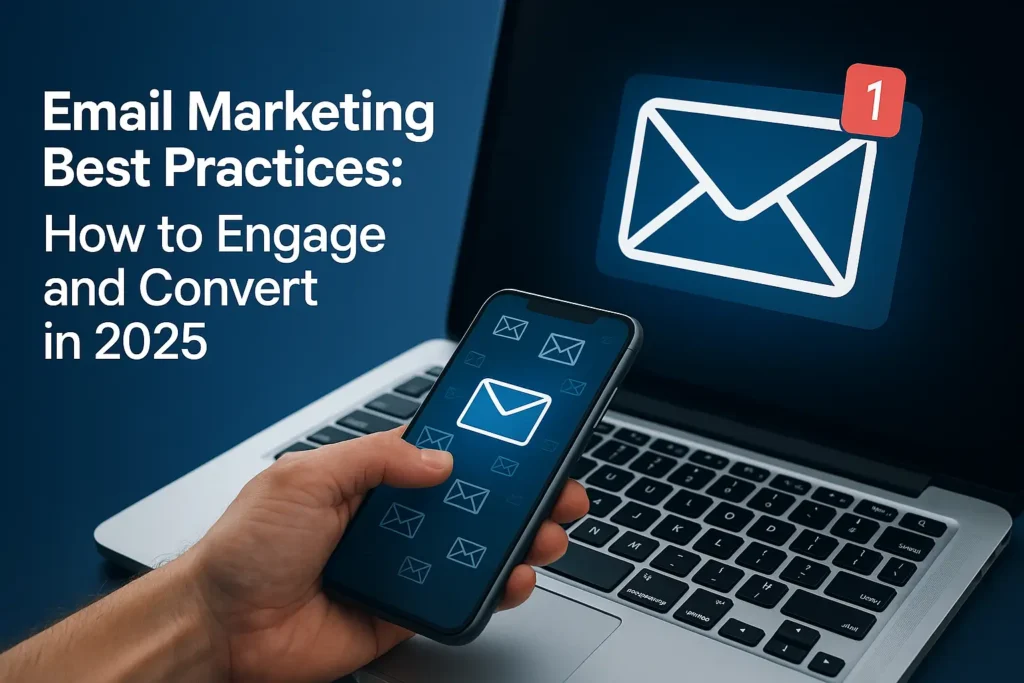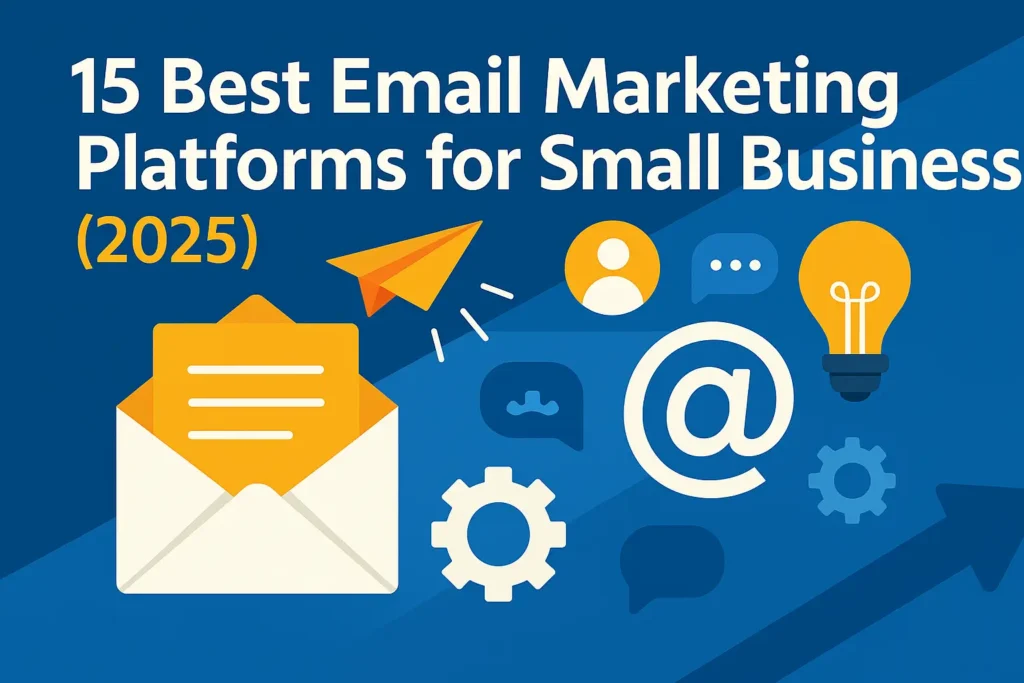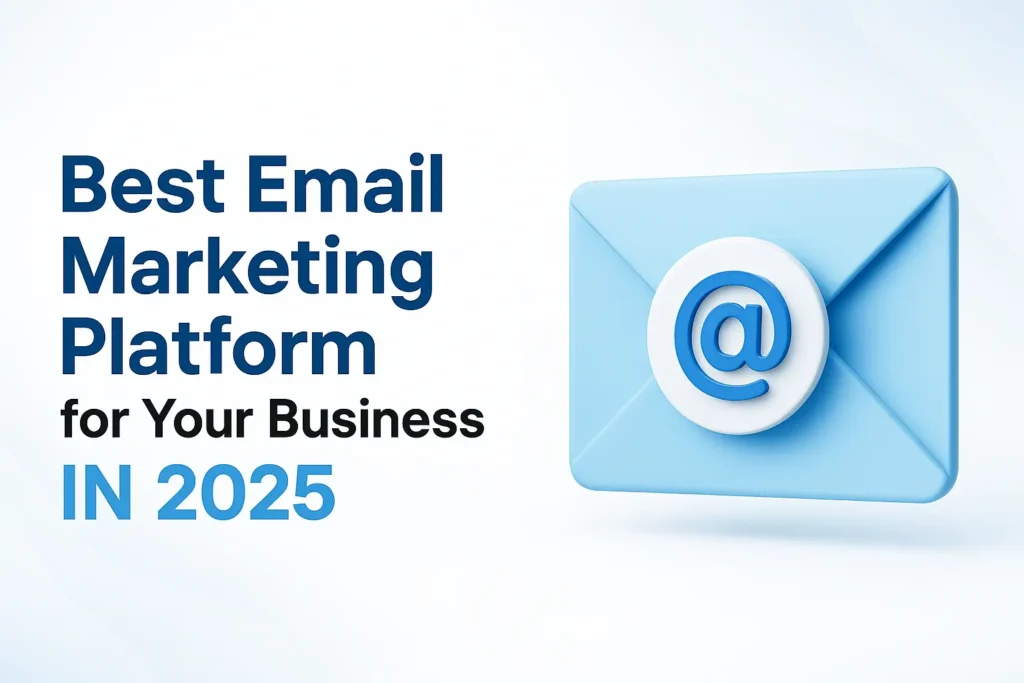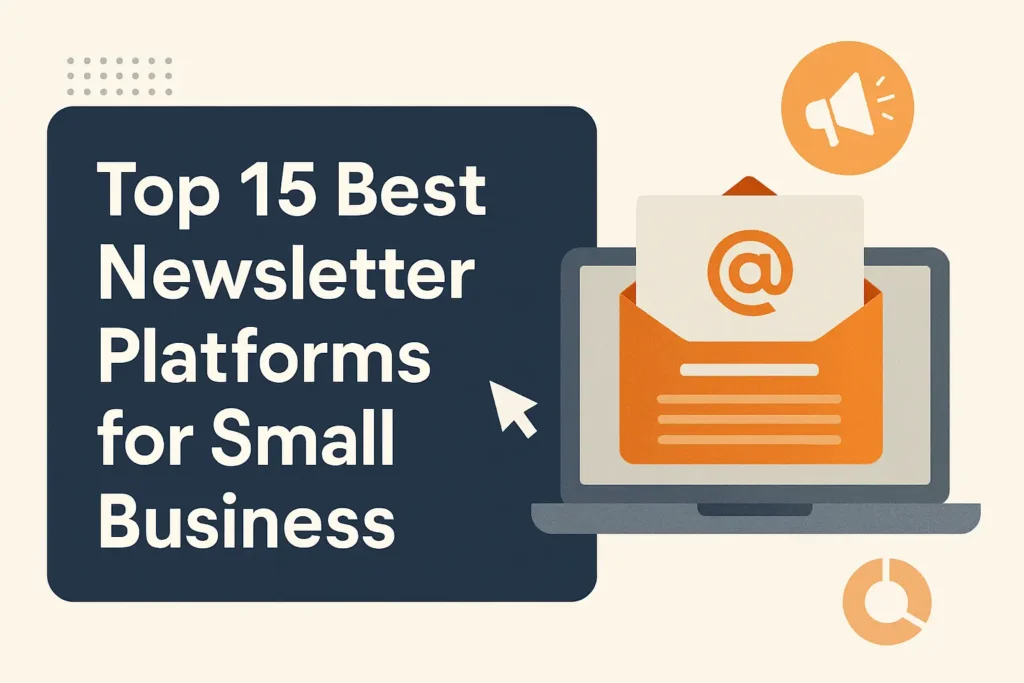Email marketing best practices aren’t just checkboxes — they’re what separate spam from strategy, noise from results.
Done right, email remains one of the most effective digital marketing channels with the highest ROI — often over $36 for every $1 spent.
But the inbox is a crowded place in 2025. Generic templates, salesy subject lines, and unsegmented blasts no longer cut it. If you want to reach, engage, and convert your audience, you need to evolve your email game.
Let’s walk through the essential email marketing best practices that top brands and marketers are using right now — not theory, but what actually works.
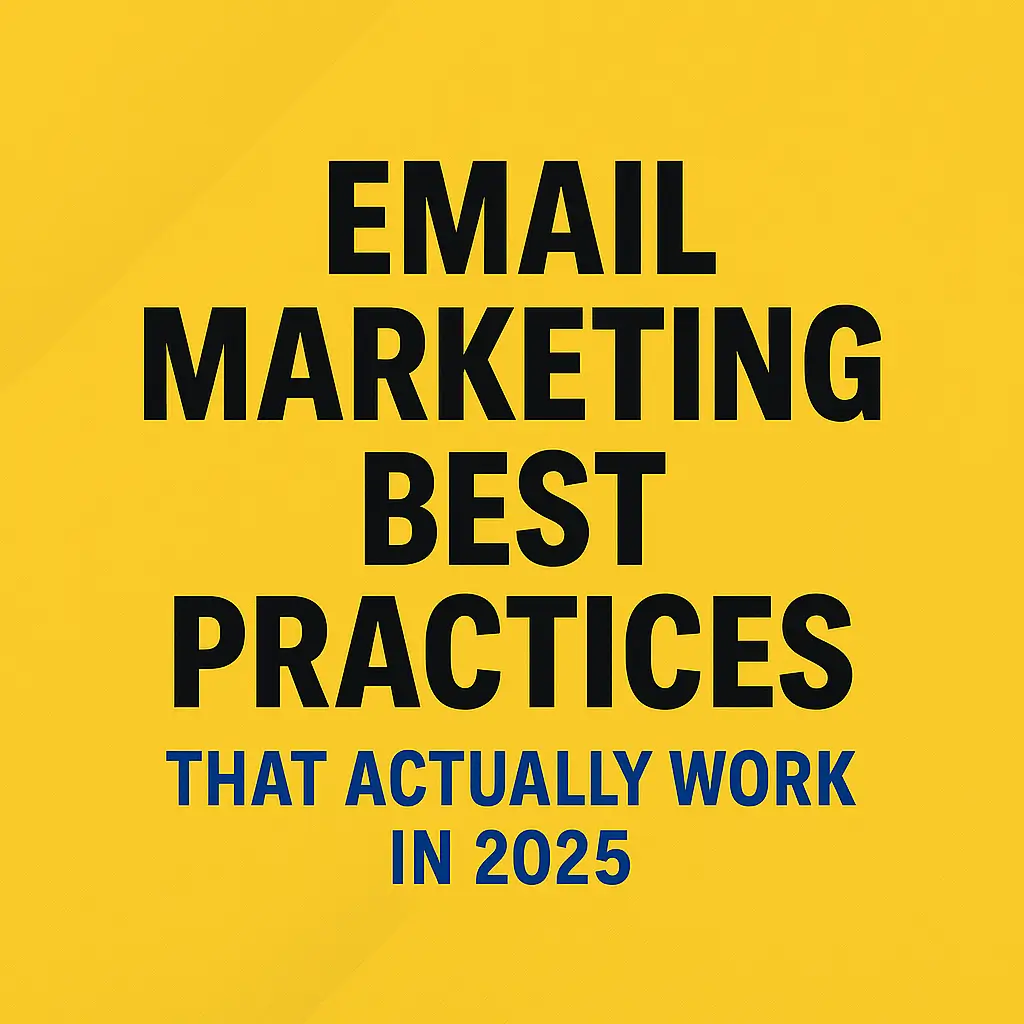
1. Start with a Clear Permission-Based List
If you don’t have permission, you don’t have a strategy — you have spam.
Always build your list ethically:
- Use opt-in forms with clear intent (no pre-checked boxes).
- Offer real value in exchange — lead magnets, resources, or early access.
- Avoid buying or scraping lists — it hurts deliverability and your brand.
Example: SaaS companies often use “free trial” or “state-of-industry” reports to collect warm, high-intent subscribers.
2. Nail the Subject Line — or Don’t Even Bother Sending
Your subject line is your only shot at getting opened.
Best practices:
- Keep it under 50 characters.
- Personalize with names or context (“[Name], struggling with [problem]?”).
- Use curiosity + clarity (but no clickbait).
- Test emojis only if they match your tone.
Real test: “You’re invited to something big” vs. “🔥 Sneak Peek: New Feature Coming Tuesday” — the latter got 2x open rate.
3. Segment Like Your ROI Depends on It (Because It Does)
Segmentation is the difference between “email marketing” and relevant email marketing.
Segment based on:
- Behavior: openers vs. non-openers, buyers vs. browsers
- Lifecycle stage: new subscriber vs. repeat buyer
- Interests or products viewed
- Source of sign-up (lead magnet, webinar, demo)
Example: An eCommerce brand sends different emails to VIP buyers and first-time browsers — leading to 4x more conversions.
4. Personalize Beyond First Name
“Hey {first name}” isn’t personalization anymore.
Modern personalization includes:
- Dynamic product or content recommendations
- Location-based messaging
- Behavior-based automation (“You left this behind…”)
- Smart timing (based on user timezone or engagement)
Real use: Grammarly sends “Weekly Writing Updates” customized to user activity — creating habit loops that reduce churn.
5. Use Mobile-First, Accessible Design
Over 70% of email opens happen on mobile. If your design isn’t responsive, you’re wasting that traffic.
Mobile & accessibility best practices:
- Single-column layouts
- Buttons at least 44x44px
- Font sizes ≥ 16px
- Alt text for all images
- Dark mode–friendly color contrast
Pro tip: Test across devices using Litmus or Email on Acid before sending any campaign.
6. Optimize Your Call to Action (CTA)
Use one clear CTA. Skip the clutter, avoid hiding it, and make sure it drives action.
CTA tips:
- Make it bold, direct, and action-focused (e.g., “Download Now” or “Book Your Demo”)
- Place it above the fold — especially for mobile
- Repeat once at the bottom if the email is long
- Use buttons, not plain text links
A/B test example: “See Our Packages” vs. “Get Your Custom Plan” → second got 43% more clicks.
7. Test, Measure, Improve — Always
Even with the best strategies, you won’t know what works until you test.
What to A/B test:
- Subject lines
- Send times and days
- CTA button text
- Layout vs. plain text
- Content formats (video, GIFs, testimonials, short/long)
Pro tip: Track more than open rate (which is affected by iOS privacy updates). Focus on click rate, conversion rate, and revenue per email.
8. Respect the Unsubscribe
If users want to leave — let them go with dignity.
Unsubscribe best practices:
- One-click unsubscribe (required by CAN-SPAM/GDPR)
- Offer preference management (e.g., “Send me fewer emails”)
- Avoid dark patterns like hiding the button or requiring login
Insight: Brands that give real control over email frequency often reduce unsubscribes by up to 30%.
9. Don’t Neglect Email Deliverability
If your emails land in spam, it doesn’t matter how good your copy is.
Deliverability hygiene:
- Use double opt-in
- Authenticate with SPF, DKIM, and DMARC
- Avoid spammy language (“FREE!!!”, all caps)
- Clean your list regularly (remove inactive users)
Tool tip: Use Postmark or Mailgun’s deliverability monitoring to track sender reputation.
10. Automate Intelligently — Not Lazily
Automation is powerful — but only if it’s strategic.
Essential automations:
- Welcome series
- Cart abandonment
- Re-engagement campaigns
- Post-purchase cross-sells
- Birthday or anniversary emails
Real-world use: An online course platform uses a 5-email onboarding drip that teaches + pitches, converting 19% of new signups to buyers in 7 days.
11. Stay Consistent — But Don’t Overwhelm
You don’t need to email every day. Still, being predictable builds trust and engagement. Consider offering users email frequency preferences to reduce unsubscribes.
Best cadence rules:
- 1–2x/week is the sweet spot for most brands
- Use a consistent sender name and tone
- Let users set preferences if possible (weekly digest vs. updates)
Warning: Inconsistent or erratic emailing is one of the top reasons for unsubscribes.
Final Thoughts
Inbox competition in 2025 is louder than ever — but there’s still plenty of opportunity.
Applying these email marketing best practices with consistency, empathy, and strategy helps you build a list that actually wants to hear from you — and buy from you.
Email isn’t dead. It’s evolving. And the marketers who respect the medium — and the people on the other side — will keep winning.
Key Takeaways:
- Build trust from the first opt-in
- Focus on relevance, clarity, and value
- Segment deeply, personalize smarter
- Measure impact — not just vanity opens
- Make every email feel like it was written just for them

